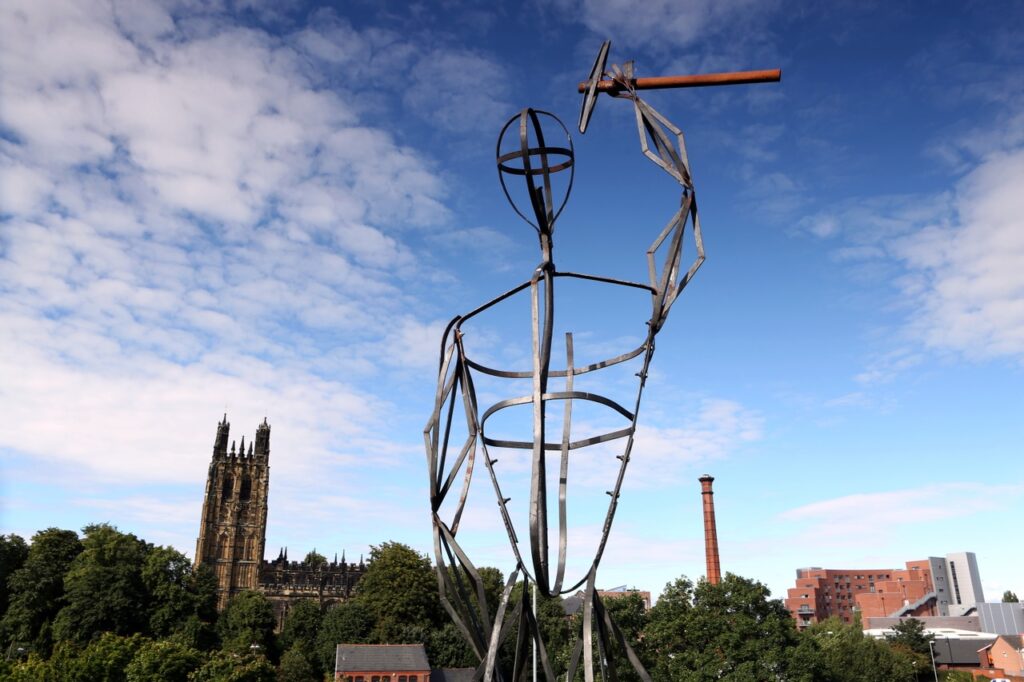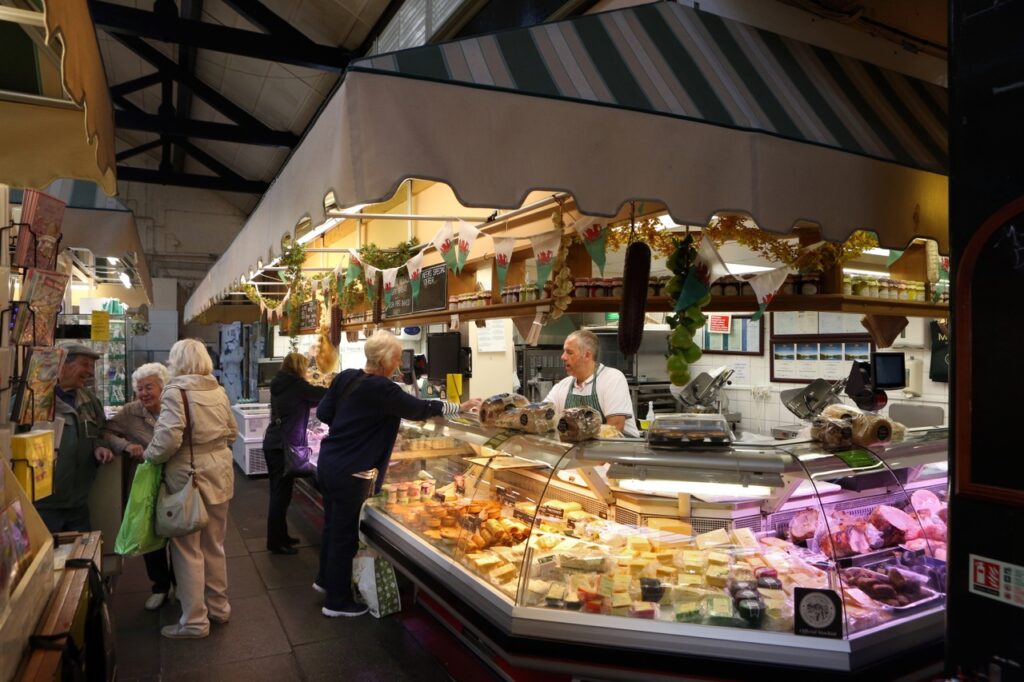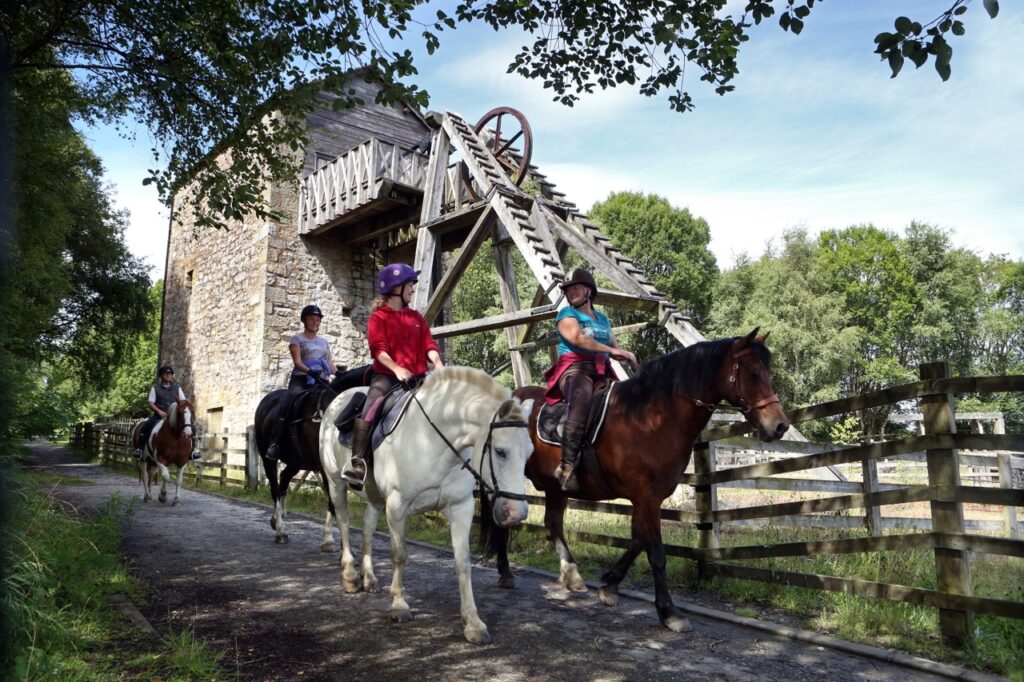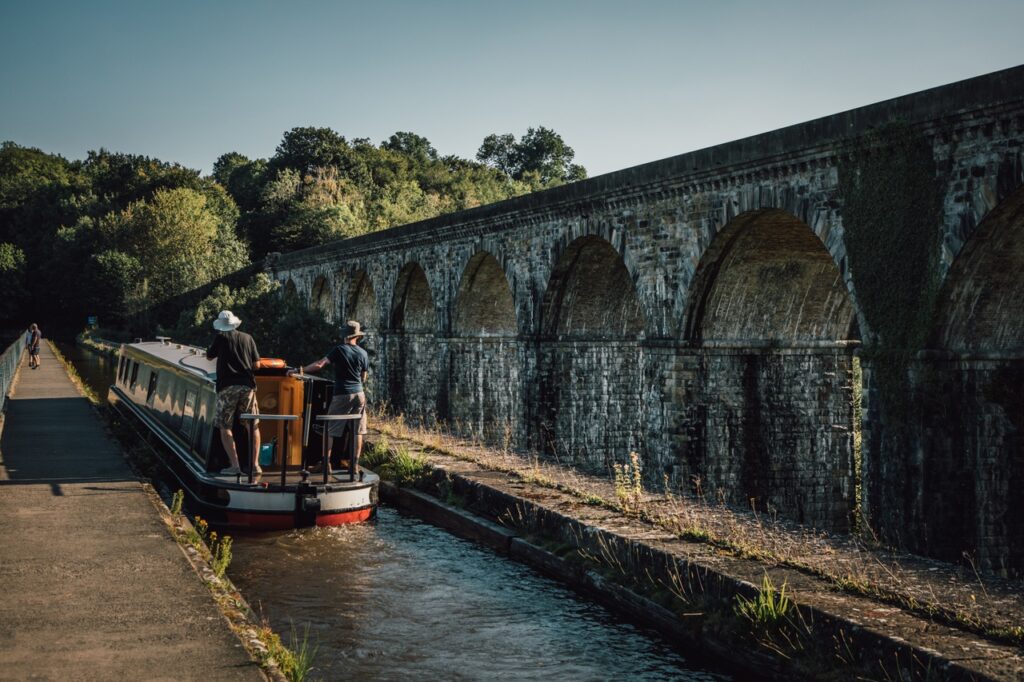Wrexham

WREXHAM is a city which enjoys a very privileged location. Situated between the lower Dee valley and the Welsh mountains in north Wales, it has a population of over 42,000.
Within 20 minutes travel it is possible to explore the Welsh hills, be fascinated by the Roman remains in Chester or view the rich historical past within Wrexham County Borough.
A short drive from Wrexham city centre are a number of historical sites which serve as a reminder of the local way of life over hundreds of years.
Pontcysyllte Aqueduct was built over 200 years ago to ferry raw materials and finished products in and out of the Cefn Mawr area, this is a wondrous example of canal-making. The arches reach a height of 200ft as they span the River Dee and it’s possible to walk or ride in a canal boat along its entire length.
The 13th Century Valley Crucis Abbey was largely destroyed following Henry VIII’s split with the Catholic church, but the remains have been preserved and restored. Walking through the many rooms presents a strong picture of the austere life experienced by the monks who lived there.
Under protection of the National Trust, Erddig Hall provides a fascinating insight into the privileged life of the upper classes. The grand building and gardens are a great attraction and the surrounding park can be freely accessed for walking.
Minera Lead Mines and Country Park and Ty Mawr Country Park, with its collection of animals and pleasant walks, are both in the Wrexham area.
Caergwrle Castle is situated five miles from Wrexham and well worth a visit for the spectacular views over the area.
Other local visitor attractions include Elihu Yale’s Tomb in St Giles Church, Bersham Heritage Centre in the beautiful Clywedog Valley, not forgetting Bangor-on-Dee Racecourse.
In recent years the town of Wrexham has been transformed into something of a shoppers’ paradise whilst still retaining the charm of its older streets, arcades and markets.
It was announced in May 2022, ahead of the Queen’s Platinum Jubilee, that Wrexham would be granted official city status.
Alongside its market traditions, Wrexham city centre is made up of a mixture of independent retailers and big-name brands. Just outside of the main centre is Eagles Meadow Shopping Complex, which was built-in 2008.
Wrexham is well known for its strong history as a market town. It has four markets, three of which are indoors, and the weekly open-air Monday market which is held on Queen’s Square.
On the Eastern outskirts of the city is the Wrexham Industrial Estate, one of the largest of its kind in Europe, home to over 300 businesses and providing work for as many as 10,000 people. The estate extends to over 550 hectares and is home to major manufacturing businesses in a range of sectors including automotive, aerospace, food, pharmaceutical and engineering.
The city has a professional football team, Wrexham AFC, the oldest football club in Wales. Their home ground is the Racecourse Ground, the oldest international football ground in the world.
Wrexham was the site of the headquarters of the Football Association of Wales from its formation in 1876 until relocation to Cardiff in 1991.
On November 16, 2020, it was confirmed that American actors Ryan Reynolds and Rob McElhenney, through the RR McReynolds Company LLC, would be taking over the club after receiving the backing of the Wrexham Supporters Trust.
The links to the glamour of Hollywood caused quite a stir in the local community and significantly raised the profile of a club which had been in the doldrums after losing its place in the higher echelons of the main English league structure.
When the 1912 National Eisteddfod of Wales was held at Wrexham, TH Parry-Williams achieved for the first time the feat, almost unheard of since, of winning both the Chair and the Crown. Wrexham held the National Eisteddfod for the sixth time in 2011.
Named after the 14th-Century scholar and last Welsh Prince of Wales, Owain Glyndŵr, Wrexham Glyndŵr University was formed when the North East Wales Institute (NEWI) was granted full university status in 2008. It consists of Plas Coch campus in the western part of the town and the North Wales School of Art and Design located on Regent Street. The institution was founded in 1887 as the Wrexham School of Science and Art.
As well as Glyndwr University, Wrexham has several schools and Yale College, which, in 2013, merged with Deeside College to create Coleg Cambria.
Historically in the county of Denbighshire, the former town became part of the county of Clwyd in 1974 and then the principal settlement of the Wrexham County Borough in 1996.
Wrexham’s built-up area extends further into villages like Bradley, Brymbo, Brynteg, Gwersyllt, New Broughton, Pentre Broughton and Rhostyllen.
Prior to de-industrialisation in the 20th Century, the town and surrounding area were a hub of coal and lead mining, the production of iron, steel and leather and brewing.
By 1913, the north east Wales coalfield was producing up to three million tonnes a year and employed over 10,000 people, dominating the economic and cultural life of the area.
One of the worst mining disasters in British history occurred at Gresford Colliery in 1934 when underground explosions and a subsequent fire cost the lives of 266 men. The industry went into decline after the First World War, and of the seven large-scale collieries operating in the Wrexham area in 1946, only two functional collieries remained by 1968. The last pit to close in the Borough was Bersham Colliery in 1986.
The leatherworks in Pentrefelin and Tuttle Street, the many coal mines in the area, the brickworks in Abenbury, Brymbo Steelworks and the breweries all closed in the latter half of the 20th Century. Wrexham suffered from the same problems as much of industrialised Britain and saw little investment during the 1970s.
In the 1980s and 1990s, the Welsh Development Agency funded a major dual carriageway (the A483), by-passing Wrexham town centre and linking up with nearby Chester and England’s trunk road network. New shopping areas were created at Wrexham’s Henblas Square, Island Green and Eagles Meadow.
Wrexham has benefited from good underground water supplies which were essential to the brewing of beer. By the mid-19th Century, there were 19 breweries in and around the town. Wrexham Lager brewery was established in 1882 in Central Road and became the first brewery in the United Kingdom to produce lager beer.
With the move away from heavy industry, Wrexham continued to serve north Wales and the Welsh borderlands as a centre for high-tech manufacturing, bio-technology, finance, professional services, retail, education and administration.
Wrexham’s former police station on Regent Street, originally the barracks for the Royal Denbighshire Militia, became home to Wrexham County Borough Museum. The museum has two galleries devoted to the history of the town and its surrounding communities. The museum also holds the archive of the Royal Welch Fusiliers; battalions were stationed in Wrexham during the First World War.

Wrexham had applied for city status three times since the turn of the 21st Century, in competitions to mark the new Millennium, and for both the Queen’s Golden and Diamond Jubilees. In March 2012, it was announced that Wrexham had again missed out on city status as the community of St Asaph was granted city status. In 2021, the Wrexham council announced their intention to apply for a fourth time for the Queen’s Platinum Jubilee award, and finally achieved their aim.
In October 2021, Wrexham County Borough was shortlisted for the UK City of Culture 2025.
The historic city centre contains a large number of listed buildings radiating out from the Parish Church of St Giles. The church precinct and the surrounding narrow enclosed streets and alleyways retain a medieval character. Several complete medieval buildings survive on Town Hill and Church Street.
Tŷ Pawb is a cultural community resource that brings together markets, arts and a food court. The former Oriel Wrecsam and People’s Market is Wrexham’s largest facility for visual arts and exhibitions. Tŷ Pawb is Welsh for Everybody’s House.
Saith Seren (Welsh for Seven Stars), a former public house, is now the Wrexham Welsh Centre. The venue is a bilingual community centre but retains its facilities as a pub with local food, a bar, live entertainment and community meeting facilities. Wrexham has its own science discovery centre, Xplore!.
FOCUS Wales is an annual multi-venue festival that takes place in the city centre with a focus on emerging talent and the Welsh language. Every year Wrexham also runs its own food festival.
Galleries in Wrexham include Undegun Arts Space on Regent Street and The Wrexham Independent Gallery (TWIG) on Lord Street.
Live music venues have developed around the core of the city. Further out of the centre other venues provide live music shows. The scene is dominated by local bands and the city has become known for the rock, indie and alternative genres.
William Aston Hall at Glyndŵr University is a 900-seat venue designed to accommodate a range of events from conferences and exhibitions to theatrical performances, comedy shows and pop/rock concerts. Acts who have performed there include Super Furry Animals, Feeder, Love, Ray Davies, Freddie Starr and Sweet.
In 2016 the Racecourse Ground re-introduced live music to its summer schedule, the Welsh band Stereophonics were the first musicians to play a live show since the festival began with Motörhead in 1982. After the success of Stereophonics, with special guests Catfish and the Bottlemen, came live music from UB 40 and Olly Murs in 2017 and in June 2018 the Stereophonics returned to the Racecourse alongside special guest Jake Bugg.
Llwyn Isaf, situated alongside Wrexham Guildhall, is a popular green area within the city centre. The green was originally the landscaped grounds of a mansion house and now lies at the centre of Wrexham’s civic centre just off Queens Square. The Welsh Children in Need concert, which included performances from Bryan Adams and Katherine Jenkins, was held there in 2005.

The central area of Wrexham has seen a number of purpose-built residential developments as well as conversions of older buildings to residential use. Outside the city centre new estates are being developed in several areas, including over 500 homes at the former Brymbo Steelworks site.
As well as being the home of Wrexham AFC, the Racecourse Ground has in the past served as the secondary home of the Scarlets, one of four Welsh professional rugby union regional sides. The Wales rugby union team have also played there on occasion. Wrexham is home to rugby union team Wrexham RFC, a team affiliated to the Welsh Rugby Union.
Queensway International Athletics stadium in Caia Park has hosted the Welsh Open Athletics event and is also home to north Wales’s largest athletics club, Wrexham Amateur Athletics Club. In 2017, it became home to rugby league side North Wales Crusaders.
Plas Coch is the north Wales regional hockey stadium, home of Wrexham Glyndwr HC, with seating for 200 spectators and floodlighting.
The North Wales Regional Tennis Centre, Wrexham, plays host to a number of international competitions each year, including the Challenger Series.
Wrexham has four golf courses – Moss Valley Golf Club, Plassey Golf Club, Wrexham Golf Club and Clays Farm Golf Club.
There are seven leisure centres – Chirk, Clywedog, Darland, Gwyn Evans (Gwersyllt), Plas Madoc, Queensway and Waterworld, which offer activities including swimming, aerobics, climbing walls and yoga.
In January 2015, it was estimated that more than 2,000 Portuguese migrants were living and working in the former town. The community is mainly centred in the district of Hightown and holds an annual carnival through the town centre.
A Polish community also exists in the city, served by a number of Polish supermarkets and restaurants.

The town of Wrexham is twinned with the Polish town of Racibórz and the German district of Märkischer Kreis.
Notable people associated with Wrexham include:
Jack Mary Ann – local folk hero who lived in the Top Boat House area of Broughton
Chris Bartley – Olympic silver medallist rower.
William Davidson Bissett (1893–1971) – Scots-born Victoria Cross recipient. Cremated at Pentre Bychan
Hannah Blore – Women’s world sailing champion 2005, 2008
David Bower – deaf actor who is best known for his role as David, the younger brother of Charles, in the comedy Four Weddings and a Funeral
Grahame Davies (1964– ) – poet
Charles Harold Dodd (1884–1973) – eminent New Testament scholar and influential Protestant theologian
Percy William Dodd (1889–1931) – classics lecturer at the University of Leeds and captain in the West Yorkshire Regiment during the Great War
Arthur Herbert Dodd (1891–1975) – Welsh historian and professor of history at University College, Bangor
Dr Harold Drinkwater (1855–1925) – physician noted as a botanical artist
Rosemarie Frankland – Miss Wales 1961, first runner-up Miss Universe 1961, Miss United Kingdom 1961 and Miss World 1961
Amy Guy gladiator ‘Siren’ on the TV show of the same name. Miss Wales 2004, Miss World Sport 2004 and Miss United Kingdom 2005
Saint Richard Gwyn – (1535–1584), Catholic martyr and Patron Saint of Wrexham
Edwin Hughes – (‘Balaclava Ned’) (1830–1927), the last survivor of the Charge of the Light Brigade at Balaklava in the Crimea
Mark Hughes – former Wales international footballer and subsequently manager of Wales and several clubs
Tom James – Olympic rowing gold medallist
George Jeffreys – (1645–1689), ‘The Hanging Judge’ of Acton Hall in Acton
Professor Sir Ewart Ray Herbert Jones FRS – chemist, inventor of the Jones oxidation, Waynflete Professor of Chemistry at Oxford University
Joey Jones – former Wales international footballer
David Lord – (1913–1944), Irish-born holder of the Victoria Cross and Distinguished Flying Cross
Andy Moore – Neath/Swansea Rugby Club and Wales international
Jonathon O’Dougherty – British National Ice Dance champion
John Godfrey Parry-Thomas – (1884–1927), engineer and racing driver
Robbie Savage – former Wales international footballer
Andy Scott – guitarist with 1970s glam rock band The Sweet
Tim Vincent – former Blue Peter television presenter and former Access Hollywood reporter
Robert Waithman – (1764–1833), born in Wrexham, became Lord Mayor of London in 1823
Neco Williams – Liverpool and Wales footballer
Elihu Yale – (1649–1721), businessman and benefactor of Yale University
Philip Yorke – (1743–1804), antiquarian and writer, squire of Erddig
Neck Deep – Welsh pop punk band formed in 2012.
(sources include wikipedia, Wrexham.com, wrecsam.com)
Back to HOME PAGE